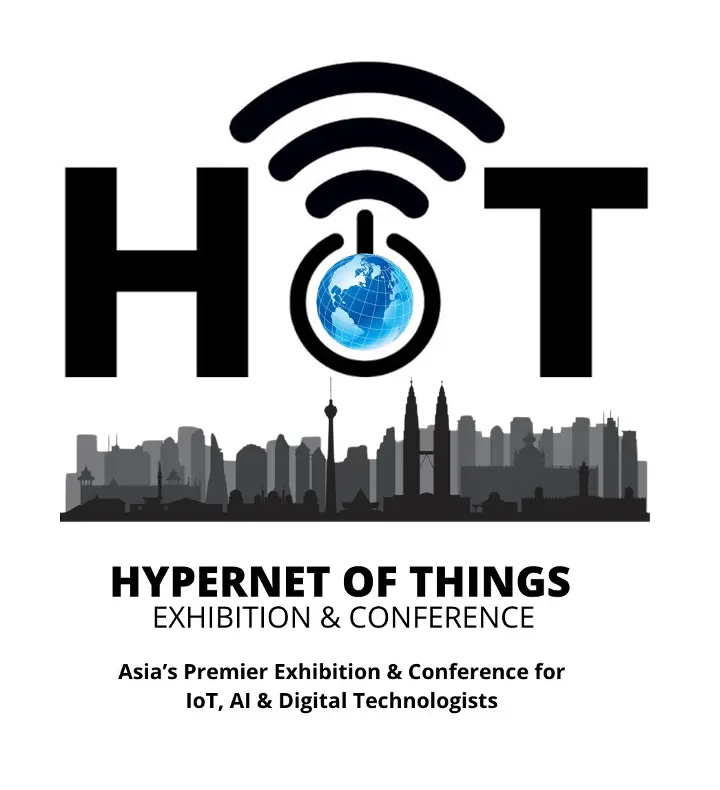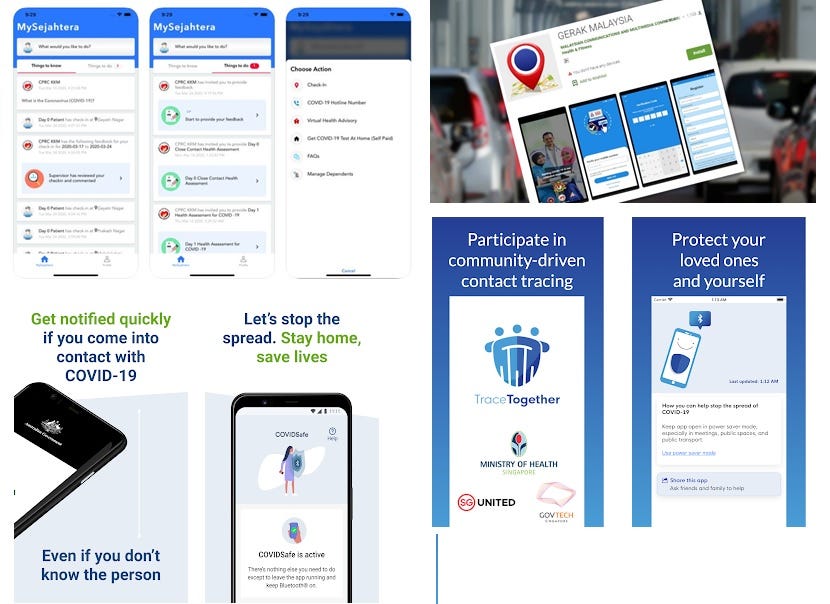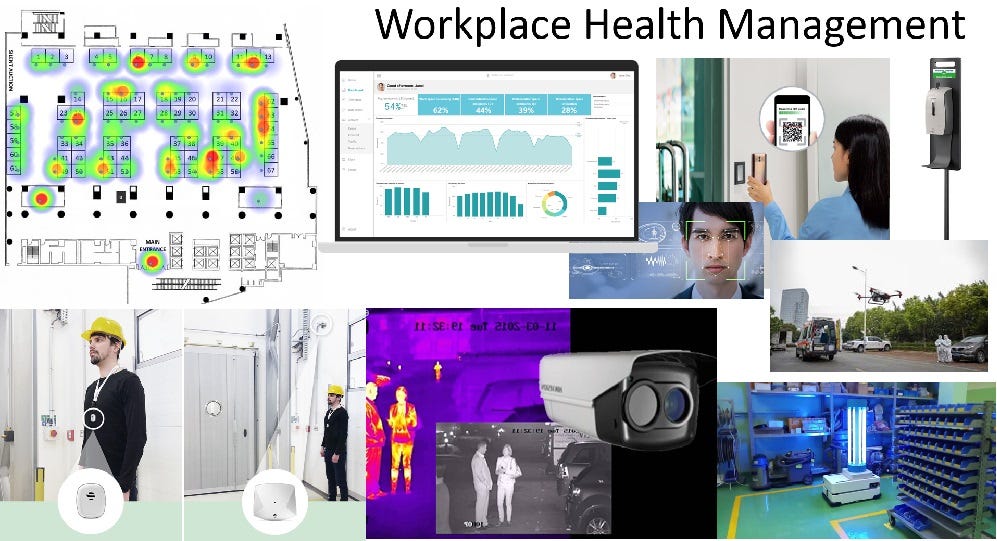The term “the Internet of things” was coined by Kevin Ashton of Procter & Gamble, who later founded MIT’s Auto-ID Center, in 1999. At that time smartphones doesn’t exist yet & wifi just came out 2 years earlier & not available as a standard feature on most PCs. Today, we have ubiquitous mobile connectivity with infrastructure that combines the internet, cloud, microservices, sensors, Wi-Fi, 5G & other wireless technologies (which we called the “Hypernet”).

Although the concept of IoT existed for more than 2 decades, we still have not reached the mass-adoption as expected or realized its full potential. Some issues such as data privacy, cyber-security concerns & trust among governments/private sectors & consumers have also impeded the adoption of IoT. These concerns are not unfounded as seen from the current debate around the collection & use of customer’s data from social media platforms owned by tech giants around the world — what more from the expected 80 Zettabytes of data that will be generated from IoT devices by the year 2025, according to IDC (1 Zetta = 1 Trillion Giga. If 1 GByte is a single brick in the great wall of china, you can build 258 great walls of china with 80 Zettabytes!). Nevertheless, some of these concerns can be alleviated with co-operation, security standards & trust, built across the whole entire eco-system value chain.
With great powers, comes great responsibilities
Recently, we have seen a few great examples of IoT (or HoT) like helping health authorities around the world in fighting & controlling the pandemic. From the use of mobile apps together with smartphone sensors for contract tracing & social distancing to monitoring movement of people, thermal imaging cameras for fever screening & mask detection & use of autonomous robots and drones for disinfection & deliveries etc. The application of IoT is used extensively around the world in the fight against the pandemic.
 Mobile Apps used for contract tracing using the smartphone’s built-in BLE
Mobile Apps used for contract tracing using the smartphone’s built-in BLE
There is also on-going research on special breath-analysis sensors with AI that can be attached to smart phones for covid-19 testing that can give almost immediate results. HoT applications will become more & more important & prevalent in the coming years as we use them for sustainable development goals around the world.
 Various IoT applications for combating covid-19
Various IoT applications for combating covid-19
For further information & discussion on such applications, you can view the recording of our previous webinar “IoT Applications against the pandemic” at https://www.facebook.com/190285198368316/videos/2735352446792407
With the amalgamation of IoT, AI & 5G ,new enhanced customer experiences ,digital services & business models will be created, operating in a fully autonomous & context aware environment creating the “Hypernet of Things”
The journey from research, design & development to deployment & maintaining an IoT-based service or solutions entails a multi-facetted approach & can be daunting & complex at most, especially for most smaller organizations. Budgets for such projects are hard to justify as the ROI (return-on-investments) & savings can only be calculated only after the deployment of sensors & acquiring enough data (of correct parameters) over a period of time for analytics or creating machine learning models to find patterns or trends. If “data” is the new oil, then “IoT” is the tool or shovel to extract, ingest & organize the data as fuel ⛽️ for your car🚗. A fancy IoT dashboard💻 with nice widgets, graphs & charts are meaningless unless it can move your car 🚗 to the “destination” required. Start by understanding the pain points & issues to a particular problem or process, the KPI’s used to define losses or efficiency gains & ways those data can be digitized. Understanding the environment is also important & deciding factor in deploying the right type of IoT sensors.
 Web-based IoT Dashboard
Web-based IoT Dashboard
One way of eliminating the risks is working with the right IoT eco-system partners & domain experts based on the problem you’re trying to solve & improve the skills set lacking in your implementation team. For a list of IoT eco-system partners, you can refer to the previous link or also contact us enquiry@my-iot.org
With the Fourth Industrial Revolution, IoT being one of it’s pillar of technology innovation along with AI & 5G — new enhanced customer experiences , digital services & business models will be created, operating in a fully autonomous & context aware environment creating the “Hypernet of Things”. A smart factory can be remotely monitored & controlled as IoT sensors will relay information from manufacturing processes to technicians & engineers working from home (WFH). If any machine failure happens, work orders will be sent automatically or alert the OEM to replace parts or arrange for repairs. In some cases, machines that has embedded IoT sensors can also perform their own diagnostics or event predict failures before it happens (predictive maintenance). An autonomous factory with AMR’s, robotic arms & fully automated systems can be used to make a “lights off” factory.
Currently, global supply chains are being disrupted by the pandemic as components & parts especially semiconductors & electronics are in high demand due to the need created for the end products such as laptops, computers, servers, sensors etc. as more organizations & schools have to adopt WFH or SFH strategies. Realtime detection or track & trace solutions implemented in warehouses, logistics supply chain, enable companies producing these end products to know the availability or location & automatically places new orders for parts that are depleted in real-time , therefore reduces wastage & shortening lead times. In fact, one of the original use cases foreseen by Kevin Ashton, the father of IoT, is to solve the problem of why “why one shade of lipstick in his make-up line always seemed to be sold out”, causing unnecessary storage of unsold colors & losing out of selling more of the “favorite” color to consumers due to the inventory for it always runs out. Nowadays, with the application of RFID’s & automated inventory platforms, these problems can be avoided to a certain extent. Furthermore, leading edge technologies such as electric vehicles (EV), drones etc. are gaining more traction & prominence as the need for autonomous deliveries of people, food, groceries & products grows in the future, in line with the further expansion of ecommerce. IoT will further enable digitalization of more & more services, blurring the lines between the physical & digital commerce. We will see more & more disruption in brick & mortar type of services , transforming or augmenting them into “digital services”.
On the demand or consumption side, the pandemic have accelerated the demise of shopping malls, cinemas, bars & restaurants around the world. Consumer behaviors & experiences have also changed, as more & more are ordering from online retailers buy using apps on their smartphones. If previously businesses rely on location, location, location in getting the most traffic or most sales — now will be competing with web domains, social media influencers , chat apps, ecommerce platforms, search engines in finding the best “virtual” location in the hypernet. Building a fancy website or an app is no longer a sure win formula to get customers, but understanding SEO, consumer behavior in the digital world is ever more important. Massive amount of data collected while you use the hypernet (or their “free” platforms & apps from social media companies), enable them to acquire deep understanding of your preferences, habits or even ideologies, which empowered their platforms to recommend services or products more accurately to you — an AI-powered service running on the cloud probably understands & better predict your behavior than your closest family & friends! One minute you’re chatting with a friend that you just lost one of your sneakers, they next you will get a recommendation from your digital assistant app which latest sneakers are on sale.
The IoB, Internet-of-brains
Currently, consumer data are harnessed through our interactions with apps & websites using our smartphones or typing on our PC keyboards consciously. What if data(your thoughts) can be sent to the hypernet without any physical interactions, even our subconscious data? As proven again & again, “real life” now is science fiction of the past — a start-up is already looking into that. Neuralink Corporation is an neurotechnology company founded by Elon Musk and others, are developing implantable brain–machine interfaces (BMI). In a recent demonstration, they have embed an implantable chip with tiny electrodes into a pig’s brain & able to read brain activity & correlate to the animal’s gait. The data is sent in real-time to an app running on a tablet over a wireless link. They further showed that they can also predict the gait moments before it happens! You can find out more from this video. A more recent demonstration have them connect the same BMI sensors to a monkey, using it’s thoughts to play a computer game https://www.bloomberg.com/news/articles/2021-02-01/elon-musk-wired-up-a-monkey-s-brain-to-play-videogames

At the moment, the target application is for stroke patients & immobilized individuals. Using the BMI IoT device, patients can control a cursor or type on a screen or control a motorized wheel chair. If we’re able to download or read thoughts from a brain, what’s stopping the same technology to upload data to our brains?
The Hypernet of Everything & Anything
As more & more “things” get connected, we will be able to harness the ever growing amount of data & automate any process, predict & act on it without any human intervention. Humans might not need a smartphone (or even a screen) to surf the net , click through social media platforms to interact with other beings— images & thoughts are retrieved directly back & forth from the cloud, beam to our conscious mind. We would become X-men or X-women, not unlike Professor X with cerebro. Before we are able to think of a product to purchase online, a drone will be buzzing over our roofs/balcony to deliver a package with the right color, functionality & design that we subconsciously thought of moments before. Once we unwrap the package, to our delight, “wow, this is what I always wanted!” Or did we? Welcome to the era of the Hypernet of Things!
HoT 2024
HoT or Hypernet-of-Things Conference & Exhibition is a yearly event organized by the Malaysia Internet-of-Things Association together with industry players in the IoT-ecosystem. You can find out more on our previous HoT 2018 & HoT 2019 events.